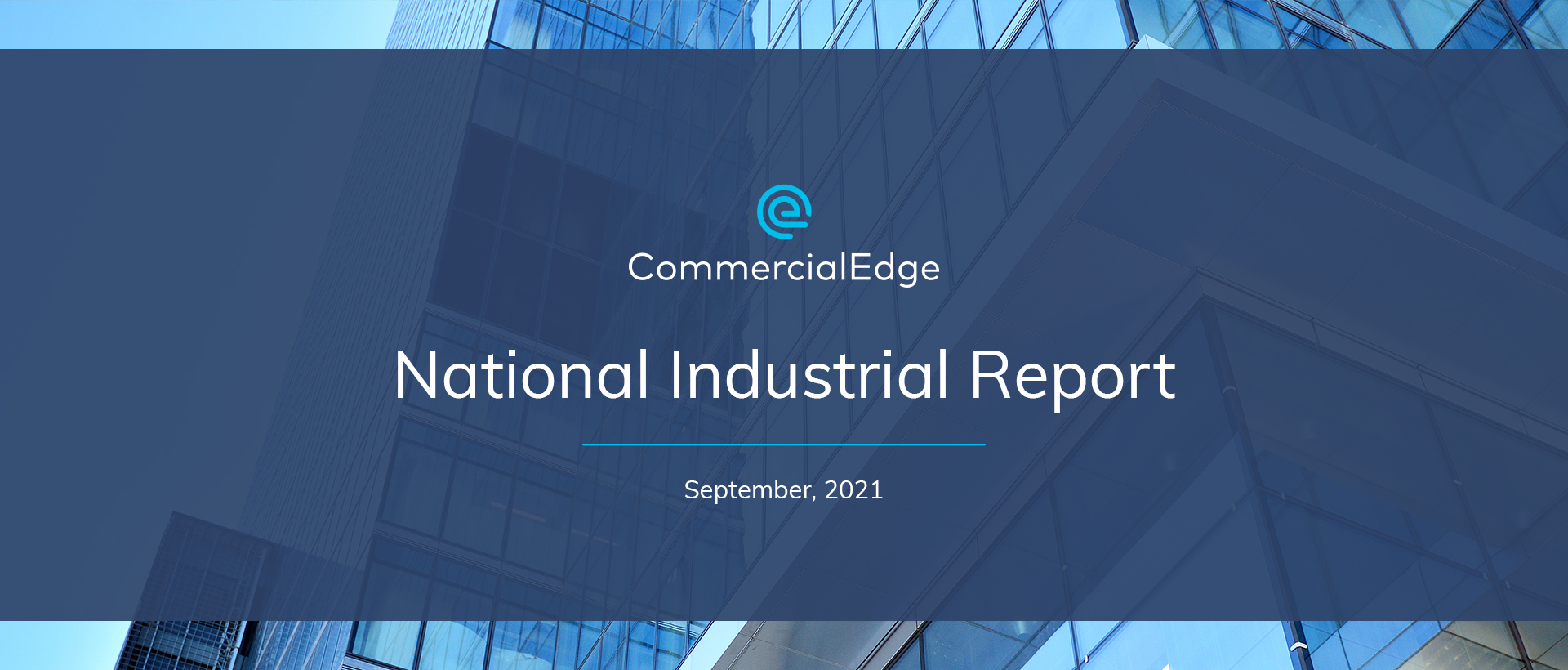Key Takeaways:
- National average rent for industrial space hits $6.35 per square foot, up 3.8% Y-o-Y
- Vacancy rate across top 30 markets climbs 10 basis points M-o-M to reach 5.9%
- Summer closes with 500 MSF of industrial space under construction & another 509.3 MSF planned
- Year-to-date sales totaled $36.6 billion, adding $6.6 billion in August alone
Port Markets Continue Rent Price Surge While Midwest Lags
With American ports busier than ever, shattering records set in 2020 – itself a historic year for port activity, e-commerce, and industrial assets – the average asking rent across the top 30 U.S. markets reached $6.35 per square foot in August, up 3.8% Y-o-Y. Similarly to July, August’s highest rents and rent increases were yet again recorded in port markets, especially West Coast markets. As such, the Inland Empire remained in the lead with a 6.6% increase compared to the previous 12 months, followed by Los Angeles with 6.5%, New Jersey at 6.2% and Seattle’s 5.7%.
New Jersey’s pricing surge placed the northeastern market first in terms of new lease premiums, which on average cost $2.38 more per square foot than in-place leases. The next highest premiums were recorded in Seattle, Los Angeles and Boston, where new tenants signed leases at an additional cost of $1.85/sq. ft., $1.77/sq. ft. and $1.73/ sq. ft., respectively. Overall, across the nation’s top 30 markets, new leases were signed on average at $7.07/ sq. ft.
Rent growth in the Southeast was second only to port markets, with the industrial hubs of Nashville, Atlanta and Memphis recording increases of 5.4%, 4.5% and 3.7%, respectively. At the same time, Midwestern markets saw the lowest gains, with Kansas City ticking up .7%, St. Louis .5% and Detroit actually contracting 1.8%. The leader of rent growth in this region was Cincinnati, which inched up 3% compared to the previous 12 months.
Read to the end and download the full August 2021 report for updated lease rate and vacancy stats for all major U.S. markets.
Inland Empire Vacancies Squeezed to a Mere 1.2%, Columbus Leads Midwest at 2.5%
Overall, vacancy rates remained tight in port markets, where new supply is deeply struggling to keep up with ever-increasing demand. As a result, Los Angeles closed August with a 3.2% vacancy rate, followed by Orange County at 3.5% and New Jersey at 3.6%. However, the Inland Empire posted the absolute lowest vacancy rate at 1.2% – while not a port market itself, this area takes on a significant percentage of volumes received through the ports of Los Angeles and Long Beach.
While port markets continue to boast some of the lowest vacancy rates among the top 30 markets, certain landlocked hubs also stand out for noticeably lower rates than the national average of 5.9%. Among them were Nashville and Indianapolis at 2.7% and Columbus at 2.5%.
Dallas-Fort Worth Adding 34MSF Industrial Space, Inland Empire Looks to Relieve Pressure with Additional 22MSF
While the first six months of the year saw 130 million square feet of new industrial space come online, with a further 447 million under construction, the summer ended with an additional 53 million square feet entering the construction pipeline for a total of 500 million in development currently. A supplemental 509.3 million square feet are currently in the planning stages.
Of the top 30 industrial markets in the U.S., Dallas-Fort Worth leads in terms of new supply, with 34.1 million square feet under construction at the moment, much of which is represented by new logistics parks or expansions to existing hubs. Phoenix follows with the second-largest expansion pipeline at 25.58 million square feet. The Inland Empire is looking to relive some of its extremely low vacancy pressure with an additional 22 million square feet of space, the third-largest volume nationally.
Even so, this new supply may not be able to keep up with demand, especially in the tightest markets, as demand shows no signs of letting up.
Summer Closes with $36.6B in Year-to-Date Sales While National Price per Square Foot Hits $106
Although August’s $106/sq. ft. average sale price was slightly lower than July’s $113, pricing continues on an upward trajectory as the industrial market’s fundamentals continue to attract strong investor attention. In fact, August’s pricing trends were nearly double the ranges recorded a mere seven years ago.
Port markets ruled in terms of sales prices as well, with Orange County leading at a whopping $302/sq. ft., followed by Los Angeles at $203/sq. ft., the Bay Area’s $202/sq. ft., Seattle’s $200/sq. ft. and New Jersey just shy of $200 at $198/sq. ft. Not only that, but these six markets totaled more than a quarter of the year-to-date national sales volume.
Furthermore, of the $36.6 billion in industrial sales record in the first eight months of the year, $6.6 billion was signed in August alone, suggesting that transactional activity will continue at a strong pace.
Download the full August 2021 report for a full picture on how U.S. industrial markets fared in the first eight months of the year, including insights on industry and economic recovery fundamentals.

You can also see our previous industrial reports.
Methodology
CommercialEdge added new markets to the National Industrial Report as Yardi Market Insight has increased its coverage to more than 50 markets in recent months. As such, the national numbers in this and future reports are not comparable to past issues.
The monthly CommercialEdge national industrial real estate report considers data recorded throughout the course of 12 months and tracks top U.S. industrial markets with a focus on average rents; vacancies (including subleases but excluding owner-occupied properties); deals closed; pipeline yield; and forecasts, as well as the economic indicators most relevant to the performance of the industrial sector. For a detailed methodology, download the full report above.
Stay current with the latest market reports and CRE news:
Latest Posts
Recent Reports
Anticipated Office Distress to Materialize in 2025
The wave of distress anticipated since the peak of the pandemic has begun to materialize at the beginning of 2025.
Tariff Uncertainty Brings Short-Term Disruptions to Industrial Sector
Tariff uncertainty will lead to delayed leasing decisions from industrial occupiers, while also increasing construction costs
Coworking Continues to Gain Traction Amid Shifting Market Dynamics
Coworking spaces across the nation continue to grow in numbers and popularity, bringing more options to the office sector amid ongoing shifts.







